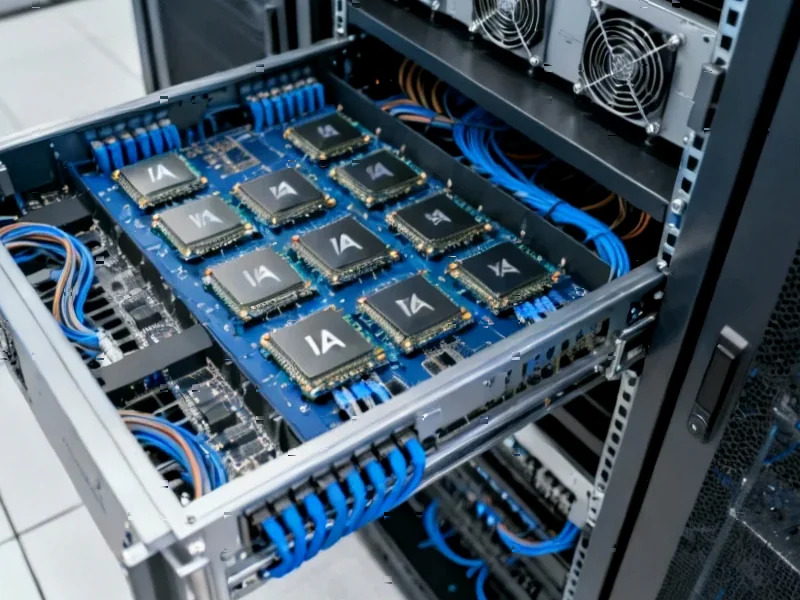According to IEEE Spectrum: Technology, Engineering, and Science News, NVIDIA’s H100 GPU with 80GB RAM is launching to space aboard the Starcloud-1 satellite, representing a hundred-fold increase in computing power over any previous space-based computer. The three-year mission, launching on SpaceX’s Bandwagon 4 Falcon 9 flight, will orbit at 350 kilometers altitude and test AI applications including processing synthetic aperture radar data from Capella’s satellites and running Google’s large language models. Starcloud CEO Philip Johnston stated the H100 is “about 100 times more powerful than any GPU computer that has been on orbit before” and marks the first terrestrial-grade data center GPU in space. The company plans to launch increasingly powerful orbital data centers, including Starcloud-2 with NVIDIA’s Blackwell GPU next year and a 100-kilowatt satellite by 2027, with ambitions for a 40-megawatt space data center by the early 2030s. This ambitious initiative signals a potential paradigm shift in how we approach computing infrastructure.
The Unavoidable Physics of Computing’s Future
The fundamental constraint driving this space-based computing revolution isn’t technological—it’s thermodynamic. As AI models grow exponentially more complex, their energy demands follow suit in what’s becoming an unsustainable trajectory. Earth-based data centers face immutable physical limits: they require land, massive water resources for cooling, and compete with other essential services for power grid capacity. The orbital approach fundamentally reconfigures this equation by leveraging space’s natural vacuum as an infinite heat sink and near-constant solar exposure as an unlimited power source. What makes this timing particularly compelling is that we’re reaching inflection points in both rocket economics and computational density simultaneously. The convergence of reusable launch technology and increasingly powerful, energy-efficient processors creates a window where orbital computing transitions from science fiction to plausible business case.
The Real Prize: Global AI Infrastructure
While the initial application focuses on processing Earth observation data—which indeed presents compelling efficiency gains—the larger vision points toward something far more transformative: distributed AI inference networks operating beyond terrestrial constraints. Imagine large language models or complex simulation engines running in space, accessible globally without latency concerns that plague distributed terrestrial networks. The strategic implications are profound, particularly for applications requiring massive parallel processing without geographical limitations. This could enable real-time global monitoring systems, weather prediction models with unprecedented resolution, or scientific computing projects that currently strain even the largest supercomputing facilities. The shift from downlinking raw data to transmitting only processed insights represents a fundamental change in how we conceptualize space-based infrastructure—treating orbit not just as an observation platform but as an active computational layer.
When Space Computing Becomes Economical
The critical threshold for orbital data centers isn’t technical feasibility—it’s economic breakeven. Starcloud’s cited $500 per kilogram launch cost target represents the tipping point where space-based computing becomes competitive with terrestrial alternatives. With SpaceX’s Starship projected to achieve $10-150 per kilogram, we’re looking at a 2026-2028 timeframe when the economic argument becomes compelling even without environmental considerations. What’s particularly insightful about Starcloud’s roadmap is its graduated approach—starting with specialized applications like SAR processing where the value proposition is immediately clear, then expanding to general computing as scale increases. This mirrors how cloud computing evolved from specialized enterprise applications to ubiquitous infrastructure. The planned progression from 7-kilowatt to 100-kilowatt to 40-megawatt facilities demonstrates a realistic scaling strategy rather than attempting an immediate leap to massive infrastructure.
The New Space Race: Computing Orbits
Starcloud isn’t operating in a vacuum—Axiom Space’s orbital data center plans and Lonestar’s lunar data center ambitions signal the emergence of an entirely new space industry segment. This represents the third wave of commercial space development following telecommunications and Earth observation. What’s particularly notable is how these companies are targeting different orbital regimes and applications, suggesting a future where computing infrastructure becomes stratified by altitude and purpose—much like how terrestrial data centers evolved into edge, regional, and hyperscale categories. The involvement of major technology providers like NVIDIA indicates that established tech giants see orbital computing as a legitimate future market rather than experimental curiosity. We’re witnessing the birth of an industry that could fundamentally reshape not just where computing happens, but what kinds of computing become possible.
The Uncharted Territory of Orbital Governance
As technically promising as orbital data centers appear, their widespread adoption faces significant regulatory and geopolitical challenges that remain largely unaddressed. Space debris management becomes exponentially more critical when valuable computing assets populate orbit—a collision could create cascading failures affecting multiple data centers. Spectrum allocation for data transmission, already contentious for satellite communications, will become fiercely contested as bandwidth demands increase. Then there’s the question of jurisdiction: which nation’s laws govern data stored and processed in space? The Outer Space Treaty provides limited guidance for commercial computing operations, suggesting we’ll need entirely new frameworks for space-based digital infrastructure. These regulatory challenges may prove more complex than the technical ones, requiring international cooperation at a scale we’ve rarely achieved in space governance.
Realistic Timeline Versus Optimistic Projections
While Starcloud’s vision of most new data centers being space-based within a decade seems ambitious, the underlying trend is undeniable. We’re approaching fundamental limits to terrestrial computing expansion due to energy, water, and land constraints. The more realistic trajectory sees orbital computing capturing specific high-value applications first—Earth observation, scientific computing, specialized AI workloads—before expanding to broader commercial applications. By the 2030s, I expect to see a hybrid model emerge where critical, compute-intensive workloads operate in space while latency-sensitive applications remain terrestrial. The true transformation won’t be an either/or scenario but a sophisticated distribution of computing resources across multiple environments optimized for different requirements. This test flight represents the beginning of that diversification—the first step toward a multi-planetary computing infrastructure that could ultimately extend beyond Earth orbit to lunar and Martian operations.




